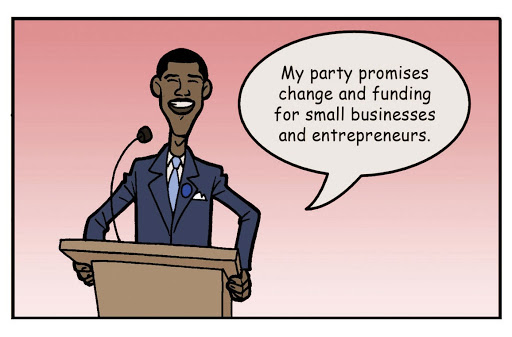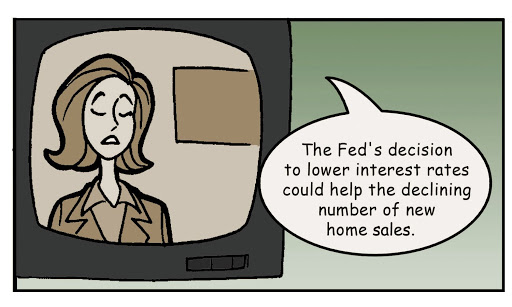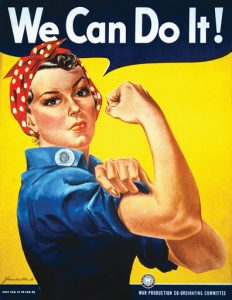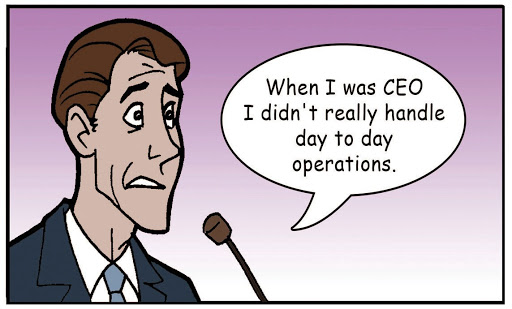3.3 Evaluating the General Environment
The Elements of the General Environment: PESTEL Analysis
An organization’s environment includes factors that it can readily affect as well as factors that largely lay beyond its influence. The latter set of factors are said to exist within the general environment. Executives must track trends and events as they evolve and try to anticipate the implications of these trends and events because the general environment often has a substantial influence on an organization’s level of success.
PESTEL analysis is one important tool that executives can rely on to organize factors within the general environment and to identify how these factors influence industries and the firms within them. PESTEL is an acronym, meaning it is an abbreviation formed from the initial letters of other words. PESTEL reflects the names of the six segments of the general environment: (1) political, (2) economic, (3) socio-cultural, (4) technological, (5) environmental, and (6) legal. Wise executives carefully examine each of these six segments to identify major opportunities and threats and then adjust their firms’ strategies accordingly (Table 3.1).
Before applying the PESTEL framework, it is important to identify which industry is being evaluated. For example, for using this tool for Panera Bread, what industry is Panera Bread in? If the food service industry is selected, then this includes all types of restaurants, from McDonalds to expensive, five-star restaurants. The food service industry also includes hospital and university cafeterias and catering services. To provide a more accurate assessment for Panera Bread, a smaller segment of the food service industry should be chosen. How about the restaurant industry? This is still too broad. Picking a segment of the restaurant industry, the fast casual restaurant industry, is the most helpful to analyze using PESTEL. To help determine what industry to select, ask “Who does the company directly compete against, head to head?” In this case, Panera Bread competes head to head with other fast casual restaurants. McDonalds, for example, competes head to head with other fast food restaurants in the fast food restaurant industry.
Examining the general environment involves gaining an understanding of key factors and trends in broader society. PESTEL analysis is a popular framework for organizing these factors and trends and isolating how they influence industries and the firms within them. Below we describe each of the six dimensions associated with PESTEL analysis: political, economic, socio-cultural, technological, environmental, and legal.
| P | Political factors include elements such as tax policies, changes in trade restrictions and tariffs, and the stability of governments. |
| E | Economic factors include elements such as interest rates, inflation rates, gross domestic product, unemployment rates, levels of disposable income, and the general growth or decline of the economy. |
| S | Socio-cultural factors include trends in demographics such as population size, age, and ethnic mix, as well as cultural trends such as attitudes toward obesity and consumer activism. |
| T | Technological factors include, for example, changes in the rate of new product development, increases in automation, and advancements in service industry delivery. |
| E | Environmental factors, also called ecological factors, include, for example, natural disasters, global warming, pollution, and weather patterns. |
| L | Legal factors include laws involving issues such as employment, health and safety, discrimination, and antitrust. |
P is for “Political”
The political segment centers on the role of governments in shaping business. This segment includes elements such as tax policies, changes in trade restrictions and tariffs, and the stability of governments (Table 3.2). Stated differently, the political segment consists of the way that the government is involved in the economy or an industry. Immigration policy is an aspect of the political segment of the general environment that offers important implications for many different organizations. For example, how to approach migrant labor in the United States has been a hotly debated dilemma. Some hospital executives have noted that immigrants lacking legal status put a strain on the healthcare system because these immigrants seldom can pay for medical services, and hospitals by law cannot turn them away from emergency rooms. However, many industries, such as hospitality, construction, and agriculture to name a few, rely heavily on migrant labor in its many forms, so political forces directly impact an industry’s ability to thrive.
Examples of several key trends representing political factors in the general environment are illustrated below.
| The extent to which companies developing clean energy sources should be subsidized by the government versus being left on their own to compete with providers of traditional energy sources is currently a hotly contested political issue. |
| The use of child labor was once commonplace in the United States. Now, firms face political scrutiny when using overseas suppliers that employ child labor. |
| The word tariff is derived from an Arabic word meaning “fees to be paid.” By levying tariffs and implementing other trade restrictions, governments can—to some extent—protect domestic firms from international competition. |
| The stability of the US government provides a source of confidence for foreign firms who want to do business in the United States. Countries that face frequent regime change and political turmoil have a harder time attracting foreign investments. |
| One of the most important duties of elected officials in the United States is to debate and set new tax policies. |

For example, farmers argue that the current US immigration policy is harmful because it impedes their ability to reliably get the work visas necessary each year to employ the critical mass of migrant labor required to effectively and affordably harvest their crops. In particular, if farmers were forced to employ only workers with preexisting legal status, the cost of produce would increase substantially because of a rise in the cost of wages and the inevitable labor shortage to harvest the crops. Restaurant chains such as Panera would pay higher prices for lettuce, tomatoes, and other perishables. As a result, Panera would have to decide whether to absorb these costs or pass them along to customers by charging more for sandwiches. Overall, any changes in immigration policy will have implications for hospitals, farmers, restaurants, and many other industries.
E is for “Economic”
The economic segment centers on the economic conditions within which organizations operate. It includes elements such as interest rates, inflation rates, gross domestic product, unemployment rates, levels of disposable income, and the general growth or decline of the economy (Table 3.3). The world-wide economic crisis of 2020 created by COVID-19 had a tremendous negative effect on a vast array of organizations. Rising unemployment discouraged consumers from purchasing expensive, nonessential goods such as automobiles and television sets. Some businesses that were forced to close drained all their resources and were never able to reopen.
One way to determine if the economic force is strong or weak in an industry is to ask, “If the economy drops, is this industry affected?” If the answer is yes, then the economic force is moderate, if not strong. In the hospital industry, for example, the economic force is weak, as a dropping economy does not have much impact on hospitals. People still need and use healthcare services in a poor economy, paid mostly by insurance.
Examples of several key trends representing economic factors in the general environment are illustrated below.
| The unemployment rate is the percentage of the labor force actively looking for employment within the last four weeks. During the Great Depression of the 1930s, the United States suffered through an unemployment rate of approximately 25%. In 2020, the unemployment rate hit about 15% due to the COVID-19 pandemic, the highest since the Great Depression (The Washington Post, 2020). |
| Housing starts is an economic indicator that measures the number of houses, apartments, and condos on which new construction has been started. Because construction involves a wide array of industries—concrete, steel, wood, drywall, plumbing, banks, and many others—housing starts are a carefully watched measure of economic conditions. |
| Gross domestic product (GDP) refers to the market value of goods and services within a country produced in a given time period and serves as a rough indicator of a country’s standard of living. The United States has a larger GDP than China, but China has enjoyed a much higher rate of GDP growth in recent years. |
| The Federal Reserve System, commonly referred to as “The Fed”, is the United States’ central banking system. The Fed attempts to strengthen the economy through its decisions, such as setting short-term interest rates. |
| Discretionary income refers to the amount of money individuals have to spend after all necessary bills are paid. As discretionary income increases, firms such as boutique clothing retailers that sell nonessential goods and services are more likely to prosper. |
Some businesses, however, actually prospered during the COVID-19 crisis. Retailers that offer deep discounts, such as Dollar General and Walmart, enjoyed an increase in their customer base as consumers sought to find ways to economize. Grocery stores like Kroger and providers of personal protective equipment (PPE) also saw their sales increase significantly.

S is for “Socio-cultural”
A generation ago, ketchup was an essential element of every American pantry and salsa was a relatively unknown product. Today, however, food manufacturers sell more salsa than ketchup in the United States. This change reflects the socio-cultural segment of the general environment. Socio-cultural factors include trends in demographics such as population size, age, and ethnic mix, as well as cultural trends such as attitudes toward obesity and consumer activism (Table 3.4). The exploding popularity of salsa and other Hispanic foods reflects the increasing number of Latinos in the United States, as well as the growing acceptance of Latino food by other ethnic groups.
Examples of several key trends representing social factors in the general environment are illustrated below.
| The rise of upscale cupcake outlets reflects a current trend in American eateries: pricey specialty stores are very popular among some consumers. |
| In the 1800s, most American couples raised many children. Farmers, for example, took this approach because of the high infant mortality rate, and children provided an important source of labor that small, family farms needed in order to operate. Today, most families are smaller. |
| The obesity rate in America, in 2020 was 40%, up from 30.5% in 2000, due in part to the increasing prevalence of fast-food restaurants and the popularity of sedentary activities such as playing video games (Galvin, 2020). |
| Hemline theory contends that women’s skirt lengths predict stock market increases and declines. The idea was born in the 1920s when economist George Taylor noticed that many women raised their skirts to reveal their silk stockings when times were good, but lowered their skirts to hide the fact that they weren’t wearing stockings when times were tough. |
| The tendency to collect material items while being reluctant to throw them away has led to a rise in self-storage outlets as well as awareness of a hoarding epidemic. |
Sometimes changes in the social segment arise from unexpected sources. Before World War II, the American workforce was overwhelmingly male. When millions of men were sent to Europe and Asia to fight in the war, however, organizations had no choice but to rely heavily on female employees. At the time, the attitudes of many executives toward women were appalling. Consider, for example, some of the advice provided to male supervisors of female workers in the July 1943 issue of Transportation Magazine:
- Older women who have never contacted the public have a hard time adapting themselves and are inclined to be cantankerous and fussy. It’s always well to impress upon older women the importance of friendliness and courtesy.
- General experience indicates that “husky” girls—those who are just a little on the heavy side—are more even tempered and efficient than their underweight sisters.
- Give every girl an adequate number of rest periods during the day. You have to make some allowances for feminine psychology. A girl has more confidence and is more efficient if she can keep her hair tidied, apply fresh lipstick and wash her hands several times a day.

The tremendous contributions of female workers during the war contradicted these awful stereotypes. The main role of women who assembled airplanes, ships, and other war materials was to support the military, of course, but their efforts also changed some male executives’ minds about what females could accomplish within organizations if provided with opportunities. When men returned from the war, women were largely displaced from their jobs. Inequities in the workplace are still pervasive today, but modern attitudes among men toward women in the workplace are much more enlightened than they were in 1943. Nevertheless, as a strategic decision maker, it is important to note that socio-cultural trends like these take many decades to change significantly.
The trend toward widespread acceptance of women into the US workforce has created important opportunities for certain organizations. Retailers such as Talbot’s and Dillard’s developed new markets for selling business attire to women. Subway and other restaurants benefit when the scarceness of time leads dual income families to purchase take-out meals rather than cook at home.

T is for “Technological”
The technological segment centers on improvements in products and services that are provided by science. Relevant factors include, for example, changes in the rate of new product development, increases in automation, and advancements in service industry delivery (Table 3.5). One key feature of the modern era is the ever-increasing pace of technological innovation. In 1965, Intel co-founder Gordon E. Moore offered an idea that has come to be known as Moore’s law. Moore’s law suggests that the performance of microcircuit technology roughly doubles every two years. This law has been very accurate in the decades since it was offered.
Examples of several key trends representing technological factors in the general environment are illustrated below.
| The adoption rate of new technology is closely monitored by market research firms. The internet reached 50 million users in 4 years. To reach the same number of users took 13 years for TV and 38 years for radio. |
| Online shopping has transformed the retail market. Failure to successfully compete against Amazon has forced long-stable retailers like Sears, JCPennys, KMart, and Neiman Marcus to close stores or shut down all together. |
| The dramatic changes in the video game industry over the past 25 years highlight the need to constantly adapt to technological factors to maintain market leadership. Once-mighty Atari has given way to current leaders Sony, Nintendo, and Microsoft. |
| The popularity of smartphones has greatly changed how some businesses operate. |
| The marketing of many products and services has been transformed because of social media. |

One implication of Moore’s law is that over time electronic devices can become smaller but also more powerful. This creates important opportunities and threats in a variety of settings. Consider, for example, photography. Just a decade ago, digital cameras were popular and rather inexpensive. With the exception of high-end and action cameras, cell phone cameras have largely replaced digital cameras, which had replaced film cameras the decade before.
E is for “Environmental” or “Ecological”
The environmental segment involves the physical and ecological conditions within which organizations operate. It includes factors such as natural disasters, pollution levels, global warming, and weather patterns (Table 3.6). The threat of pollution, for example, has forced municipalities to treat water supplies with chemicals. These chemicals increase the safety of the water but detract from its taste. This has created opportunities for businesses that provide better-tasting water. Rather than consume cheap but bad-tasting tap water, many consumers purchase bottled water. Global warming has created the need to restrict greenhouse gases by reducing the burning of fossil fuels. The electric car industry is a result of this environmental force. Most all automobile manufacturers have electric cars as part of their product lines.
Examples of several key trends representing environmental/ecological factors in the general environment are illustrated below.
| The Subaru automotive plant in Lafayette, Indiana was the first auto manufacturing facility to achieve zero landfill status. |
| The increased number of solar energy companies and use of solar panels is a direct result of climate change. |
| Individuals embracing the three Rs of green living—reduce, reuse, recycle—has fueled new business concepts such as Recycle Match, a firm that brings together waste products with businesses that need those materials. |
| Concern about the environmental effects of burning fossil fuels has contributed to the growing popularity of electric scooters. |
| The increase in the number of food cooperatives reflects growing interest in sustainable, natural foods that are produced with a high degree of social responsibility. |

As is the case for many companies, bottled water producers not only have benefited from the general environment but also have been threatened by it. Some estimates are that 80% of plastic bottles end up in landfills. This has led some socially conscious consumers to become hostile to bottled water. Meanwhile, water filtration systems offered by Brita and other companies are a cheaper way to obtain clean and tasty water. Such systems also hold considerable appeal for individuals who feel the need to cut personal expenses due to economic conditions. In sum, bottled water producers have been provided opportunities by the environmental segment of the general environment, specifically, the spread of poor-tasting water to combat pollution, but are faced with threats from the socio-cultural segment, the social conscience of some consumers, and the economic segment, the financial concerns of other consumers. The ecological trend toward reducing greenhouse gases and global warming, has also created opportunities for Elon Musk and Tesla on several fronts. Companies that produce solar panels, lithium-ion batteries, and electric cars are ventures Musk has started, leveraging the ecological forces that makes these products more and more desirable.
L is for “Legal”
The legal segment centers on how the courts and laws influence business activity. Examples of important legal factors include employment laws, health and safety regulations, discrimination laws, and antitrust laws (Table 3.7).
Some people confuse the political factors with legal ones. The key distinction is that political factors are related to the interactions and relationship between businesses and the government whereas legal factors are the boundary parameters of business activities. For example, a government policy such as a trade restriction between countries would constitute a political factor, not a legal one. Similarly, a law requiring employees to be paid overtime past 40 hours would be a legal factor, not a political one.
Intellectual property rights are a particularly daunting aspect of the legal segment for many organizations. When a studio such as Pixar produces a movie, a software firm such as Adobe revises a program, or a video game company such as Activision devises a new game, these firms are creating intellectual property. Such firms attempt to make profits by selling copies of their movies, programs, and games to individuals. Piracy of intellectual property—a process wherein illegal copies are made and sold by others—poses a serious threat to such profits. Law enforcement agencies and courts in many countries, including the United States, provide organizations with the necessary legal mechanisms to protect their intellectual property from piracy.
Examples of several key trends representing legal factors in the general environment are illustrated below.
| Electronic recycling laws are creating opportunities for “green collar jobs.” A Missouri law, for example, requires computer electronic equipment manufacturers to develop and implement recycling plans. |
| The Sherman Antitrust Act of 1890 limits cartels and monopolies in the United States. Senator John Sherman was the principal author of this legislation. |
| In the United States, it is illegal to discriminate against anyone based on age, race, religion, sex or disability. |
| The role of the Occupational Safety and Health Administration (OSHA) is to prevent work-related injuries, diseases, and fatalities by enforcing standards for workplace safety and health. |
| Laws requiring that nutrition information must appear on the packaging of most food products are intended to protect consumers and help them make informed choices. |
In other countries, such as China, piracy of intellectual property is quite common. Three other general environment segments play a role in making piracy a major concern. First, in terms of the socio-cultural segment, China is the most populous country in the world. Second, in terms of the economic segment, China’s affluence is growing rapidly. Third, in terms of the technological segment, rapid advances in computers and communication have made piracy easier over time. Taken together, these various general environment trends lead piracy to be a major source of angst for firms that rely on intellectual property to deliver profits.

Key Takeaway
- PESTEL is a framework that reflects general environmental factors—political, economic, socio-cultural, technological, environmental, and legal—that can impact an organization either positively or negatively. In many cases, executives can prevent negative outcomes and leverage positive forces by performing a PESTEL analysis to diagnose where in the general environment important opportunities and threats arise.
Exercises
- What does each letter of PESTEL mean?
- Using a recent news article, identify a trend that has a positive and negative implication for a particular industry.
- Can you identify a general environment trend that has positive implications for nursing homes but negative implications for diaper makers?
- Are all six elements of PESTEL important to every organization? Why or why not?
- What is a key trend for each letter of PESTEL and one industry or firm that would be affected by that trend?
References
Earth911. (n.d.). Plastic recycling facts. https://earth911.com/earth-watch/the-numbers-on-plastics/#:~:text=Plastics%20recycling%20fast%20facts&text=While%20overall%20recovery%20of%20plastics,of%2037%20percent%20in%202008.
Galvin, G. (2020, February 27). The U.S. obesity rate now tops 40%. U. S. News and World Report. https://www.usnews.com/news/healthiest-communities/articles/2020-02-27/us-obesity-rate-passes-40-percent.
Washington Post. (2020, May 8). U.S. unemployment rate soars to 14.7 percent, the worst since the Depression era. Washington Post. https://www.washingtonpost.com/business/2020/05/08/april-2020-jobs-report/.
Image Credits
Figure 3.5: Miller, J. Howard. “We Can Do It”. Public Domain. Retrieved from https://upload.wikimedia.org/wikipedia/commons/1/12/We_Can_Do_It%21.jpg.
Figure 3.7: Fleser, Casey. “Evolution (34 / 365).” CC BY 2.0. Retrieved from https://flic.kr/p/5XqgCz.
Figure 3.8: Webster, Tony. “Spin Shared Electric Scooters.” CC BY 2.0. Cropped. Retrieved from https://www.flickr.com/photos/diversey/46775872844.
Evaluation of six forces in an industry's macro-environment: political, economic, socio-cultural, technological, environmental, and legal.

